HOW TO
Create a basin model using a digital elevation model (DEM) in ArcGIS Pro
Summary
The Basin (Spatial Analyst) tool in ArcGIS Pro creates a delineated drainage basin raster by identifying ridge lines between basins. This is useful for understanding an area’s drainage system by identifying where and how many drainage basins are located within the area.
The following article provides a workflow to create a basin model using a digital elevation model (DEM) in ArcGIS Pro.
Procedure
Note: The workflow below requires the Spatial Analyst license. Refer to ArcGIS Pro: Enable the Spatial Analyst extension for more information.
- Run the Fill tool on the DEM to fill the sinks in the surface raster and remove small imperfections in the data.
- In ArcGIS Pro, navigate to Analysis > Tools to open the Geoprocessing pane.
- In the Geoprocessing pane, search for and click the Fill (Spatial Analyst) tool.
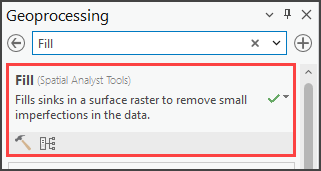
- On the Parameters tab of the Fill pane, select a DEM for the Input surface raster parameter. In this example, the River Systems layer is selected.
- Verify the path name for the Output surface raster parameter. In this example, ‘RiverSystemFill’ is named.
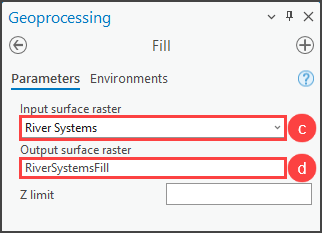
- Input the Z limit if necessary. Refer to ArcGIS Pro: Fill (Spatial Analyst) for more information on the tool parameters.
- Click Run.
The image below is a before and after comparison of small imperfections in the DEM layer corrected with the Fill tool.
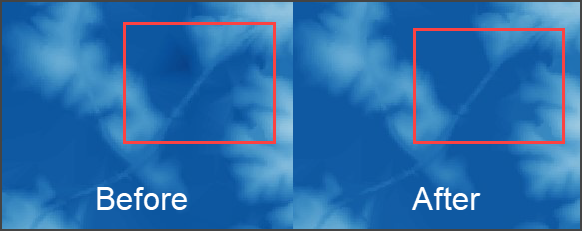
- Run the Flow Direction tool.
- In the Geoprocessing pane, search for and select the Flow Direction (Spatial Analyst) tool.
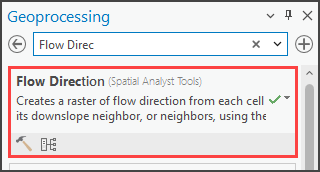
- On the Parameters tab of the Flow Direction pane, select the output from Step 1 for the Input surface raster parameter. In this example, the RiverSystemsFill layer is selected.
- Verify the path name for the Output flow direction raster parameter. In this example, 'FlowDirectOut' is named.
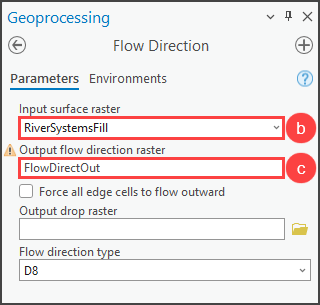
- Click Run.
The image below shows the output layer after running the Flow Direction tool.
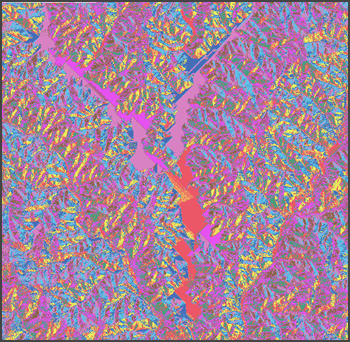
- Run the Basin tool.
- In the Geoprocessing pane, search for and select the Basin (Spatial Analyst) tool.
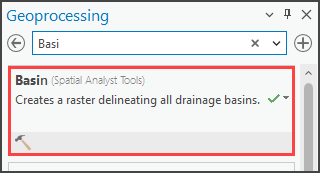
- On the Parameters tab of the Basin pane, select the output from Step 2 for the Input D8 flow direction raster parameter. In this example, the FlowDirectOut layer is selected.
- Verify the path name for the Output raster parameter. In this example, ‘BasinModel’ is named.
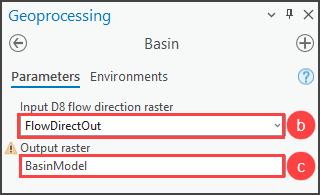
- Click Run.
The image below shows the basin model after running the Basin tool. Each basin is represented with a different color.
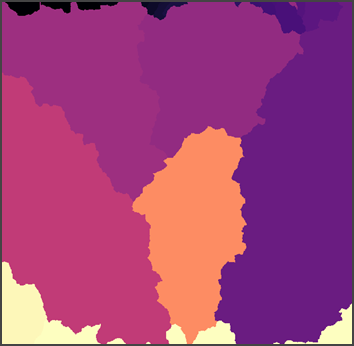
Article ID: 000029394
- ArcGIS Pro 3 0
- ArcGIS Pro 2 8 x
- ArcGIS Pro 2 x
Get help from ArcGIS experts
Start chatting now

